#Animal facts
Text
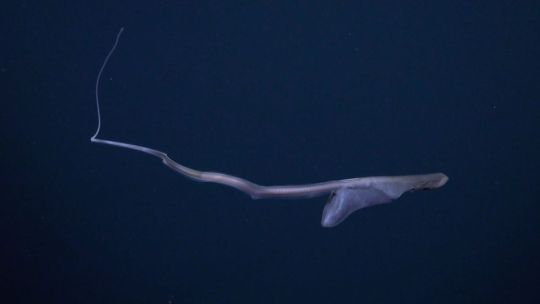
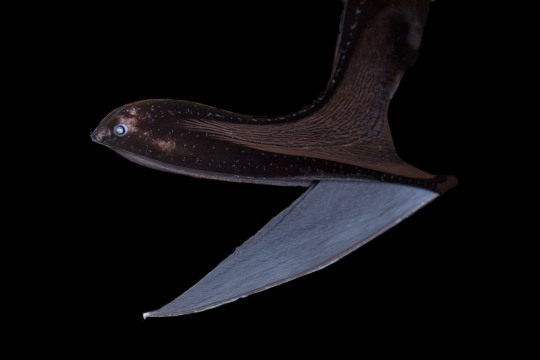
youtube
The Can-do Pelican Eel
The pelican eel, also known as the gulper eel (Eurypharynx pelecanoides), are the only known species of eel in the family Eurypharyngidae. They are found exclusively in the deeper parts of the water column, from depths of 500 up to to 3,000 m (1,600 to 9,800 ft), but are distributed throughout all the world's oceans.
The gulper eel is perhaps most famous for its unique body shape. Like many deep-sea fish, this species is highly adapted to its environment; maximum energy efficiency is the highest priority. To that end, the pelican eel has a large head, and a jaw estimated to be quarter of the total length of its body. The jaw is loosely hinged, meaning that gulper eels can open their mouths extremely wide. The rest of the eel, in contrast, is quite slender and long, about 0.75 m (2.5 ft) in length on average. Most individuals are black--so black, in fact, that they only reflect 0.5% of light; perfect for hiding from potential predators.
Although they look skinny, E. pelecanoides can expand their stomachs to hold prey much larger than themselves. Their primary prey consists of crustaceans and cephalopods, though they may feed opportunistically on other fish. Because it is so well camouflaged, it uses bioluminescent organs on the tip of its tail to attract prey. Gulper eels themselves are preyed upon by lancetfish and other larger deep-sea fish. To deter predators, they will gulp down a large amount of water; this stretches the loose skin around their head and throat, and inflates them to several times their usual size.
Because of their remote location, the breeding habits of gulper eels are relatively unknown. However, it is believed that smell plays a large part in attracting a mate, as pelican eels have highly developed olfactory organs. Like other eels, they're born as tiny, transparent larvae in a state known as the leptocephalus stage. At this stage, they do not have any red blood cells. Researchers aren't sure how long it takes gulper eels to become fully mature, or how long they live, but many believe that adults die shortly after mating.
Conservation status: The population size of E. pelecanoides has not been assessed, and thus the IUCN has not made a determination on its status. The greatest threat for this species is deep-sea trawling, which frequently brings up gulper eels as by-catch.
Photos/Video
Paul Caiger
Schmidt Ocean Institute
EV Nautilus Team (I highly recommend checking out their 2023 highlights reel!)
#pelican eel#gulper eel#Anguilliformes#Eurypharyngidae#eels#ray-finned fish#bony fish#fish#pelagic fauna#open ocean fauna#pelagic fish#deep sea#deep sea fish#Atlantic Ocean#Pacific Ocean#Indian Ocean#Arctic Ocean#Southern Ocean#animal facts#biology#zoology#ecology#marine fauna#marine fish#Youtube
122 notes
·
View notes
Text
every single day I think about how american black vultures are known for engaging in interspecific allopreening (preening between different species)
and they have a specific relationship with crested caracaras, in which the black vultures assist them by not only preening them after meals but also leading them to food in the first place— due to their superior sense of smell— while the caracaras assist the black vultures by acting as a warning signal in case of danger
and while this is more typical of black vultures, this is not common at all for any member of the falconidae family— it’s a special bond!

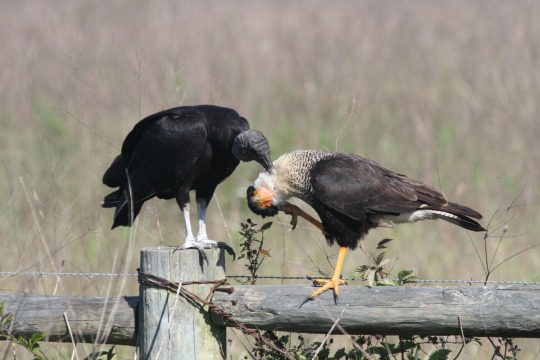
yet another post in favor of vultures everyone , hope you enjoy:) and I implore you to do some more research on these incredible birds !!
EDIT: I meant interspecific allopreening! excuse my typo!
#birds#birdposting#bird blogging#birdblr#black vulture#crested caracara#animal facts#bird facts#vultures#daemnthoughts#daemnblogging
34K notes
·
View notes
Text
I have never seen an animal sleep in such a cursed way what
19K notes
·
View notes
Text

45K notes
·
View notes
Text
I heard it's Superb Owl Sunday so I have prepared some superb owls for you.
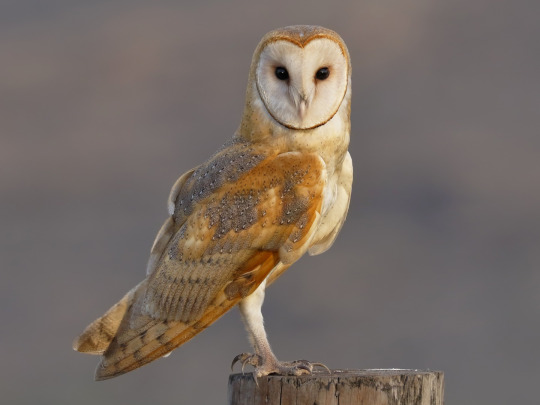
The barn owl is the most widespread species of owl, living on every continent except Antarctica. Their faces are shaped like a disk to help their hearing, giving them some of the best hearing of any owl. They mostly hunt by sound.

Snowy owls are the largest arctic predatory birds, They are born with black feathers and get whiter as they age. Females usually have more dark feathers than males.
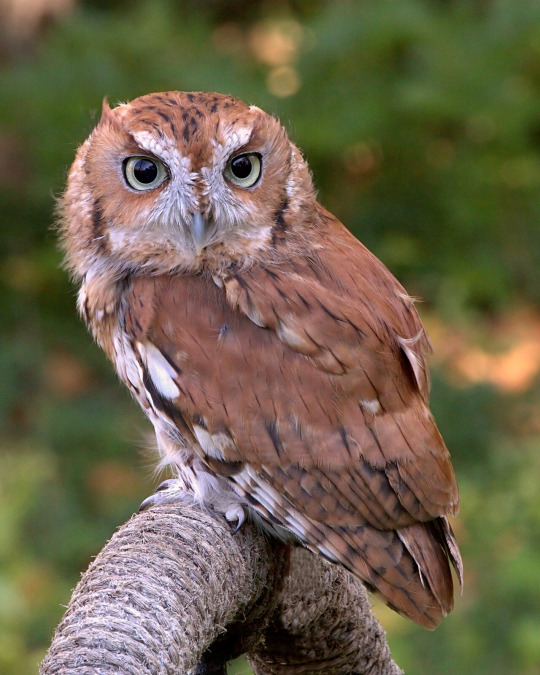

Eastern screech owls have a few feather variants that make them look like completely different species.

The southern white-faced owl can increase its metabolic rate during winter to compensate for the cold and lack of food. They lay their eggs in nests built and abandoned by other birds.

The great grey owl is the largest owl by length, but a lot of that is feathers and they're actually very light for their size. Their hearing is good enough to hear rodents burrowing through snow and they can break through hard-packed snow to catch prey.

Blakiston's fish owl is the largest owl by mass and eats mostly fish. Despite the name, they may be more closely related to eagle owls than fish owls.

The elf owl is the smallest owl species, barely larger than a sparrow. They hunt bugs and play dead when caught. They like to live in holes in saguaro cacti.

Burrowing owls live in underground burrows. While they can dig, they mostly take over burrows from other animals. Farmers killing prairie dogs has severely reduced burrowing owl populations. They decorate their burrows with feces to attract bugs to eat.
The barking owl is called that because
youtube
Its nice to have a day to appreciate superb owls. Feel free to spread the love by reblogging with some more owl facts.
#superb owl#superbowl sunday#owl#barn owl#snowy owl#eastern screech owl#southern white-faced owl#great grey owl#blakiston's fish owl#elf owl#burrowing owl#barking owl#animal facts#birds#birds of prey#Youtube
4K notes
·
View notes
Text

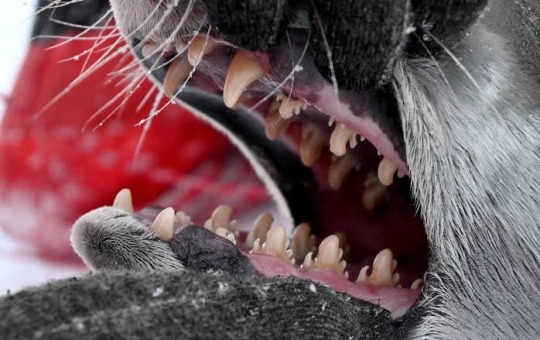
The teeth of a crabeater seal
Specially evolved for sieving krill & small crustaceans out of the seawater! These highly adapted seals are the most abundant species of pinniped on the planet.
6K notes
·
View notes
Text
The Camouflaged Looper: these caterpillars fashion their own camouflage by collecting flower petals/vegetation and using silk to "glue" the pieces onto their bodies
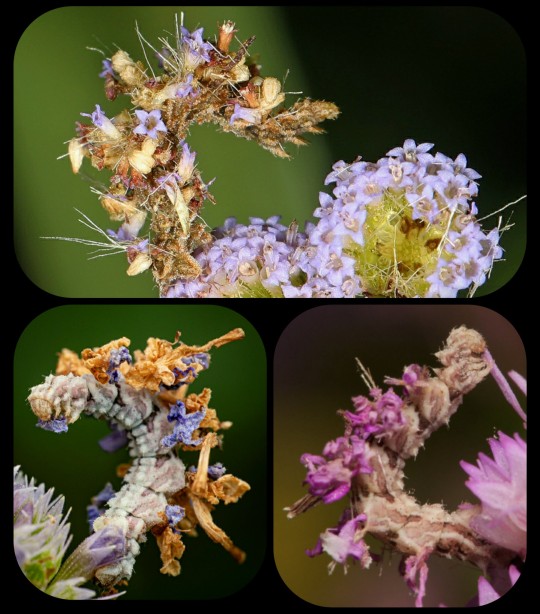
Though they're often referred to as "camouflaged loopers," these caterpillars are the larvae of the wavy-lined emerald moth (Synchlora aerata).
Camouflaged loopers deploy a unique form of self-defense -- they snip off tiny pieces of the flowers upon which they feed, then use bits of silk to attach the vegetation to their backs. This provides them with a kind of camouflage, enabling them to blend in with the plants that they eat.

Some of them create little tufts that run along their backs, while others fashion a thicker camouflage that covers their backs completely. In some cases, the camouflaged loopers will even build much larger bundles that surround their entire bodies.
Their range includes most of North America (from southern Canada down through Texas) and they can feed upon an enormous variety of plants -- so the disguises that these caterpillars build can come in countless colors, shapes, and sizes, incorporating many different flowers and other bits of vegetation.

And this is what the fully-developed moth looks like:
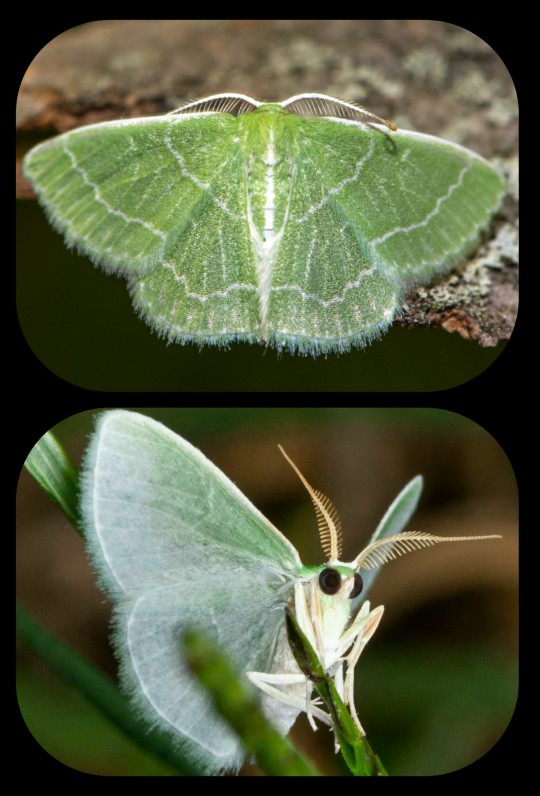
Sources & More Info:
Loudoun Wildlife Conservancy: Wavy-Lined Emerald, Master of Disguise
Maryland Biodiversity Project: Wavy-Lined Emerald Moth (Synchlora aerata)
The Caterpillar Lab: Camouflaged Looper
University of Alberta Museums: Synchlora aerata
Missouri Department of Conservation: Wavy-Lined Emerald
Nebraskaland Magazine: The Amazing Camouflaged Looper
Lake County Forest Preserves: Camouflage Revealed
#lepidoptera#moths#insects#caterpillar#camouflaged looper#animal camouflage#cute bugs#tw bugs#fashion#nature is weird#animal facts#these literal larvae have better fashion sense than I do
7K notes
·
View notes
Text

Meet one of the planet’s smallest turtles: the bog turtle (Glyptemys muhlenbergii)! This petite reptile grows up to 4.5 in (11.4 cm) long. It’s easily identifiable by the orange patches on either side of its head.
The bog turtle has an impressive lifespan, with the oldest documented individual reaching an age of 61! Unfortunately, this species is critically endangered due in part to poaching and habitat loss as a result of human expansion.
Photo: U.S. Fish and Wildlife Service Headquarters, CC BY 2.0, flickr (juvenile pictured)
#science#nature#natural history#animals#turtle#cool animals#did you know#animal kingdom#animal facts#reptile#herpetology#small animals
2K notes
·
View notes
Text

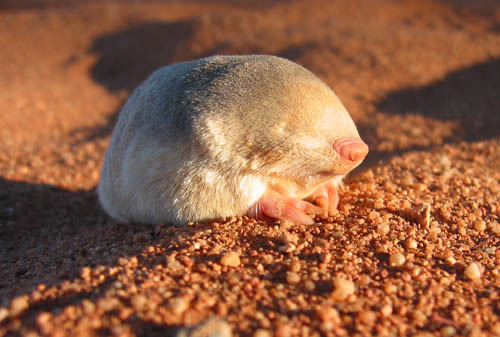
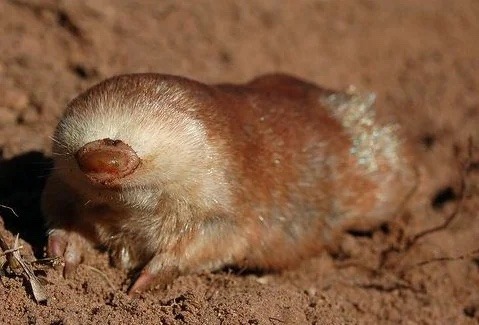
@sabertoothwalrus Now that people are interested in moles. These three moles are not related.
Top one is Laurasiatheria (same superorder as dogs, horses, bats, and hedgehogs)
Middle one is Afrotheria (same superorder as elephants, tenrecs, aardvarks, and manatees)
And the bottom one is Australidelphia (same superorder as cuscuses, quolls, bandicoots, and wallabies)
All three have convergently evolved to be moles! How cool is that!
3K notes
·
View notes
Text
Today in important facts about bunnies:
Northern Arctic hares have a strange habit of fleeing by hopping on their hind legs instead of running on all fours, and no one knows why the hell this happens

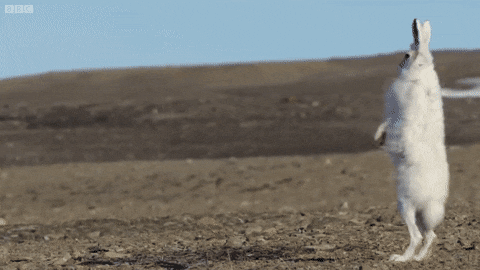
#animal#lagomorpha#arctic hare#lepus#hares#hare#lepus arcticus#bunny#nature#animal facts#important facts about bunnies#important facts#oh wow#this hit today#stay tuned for more lagomorph facts
27K notes
·
View notes
Text

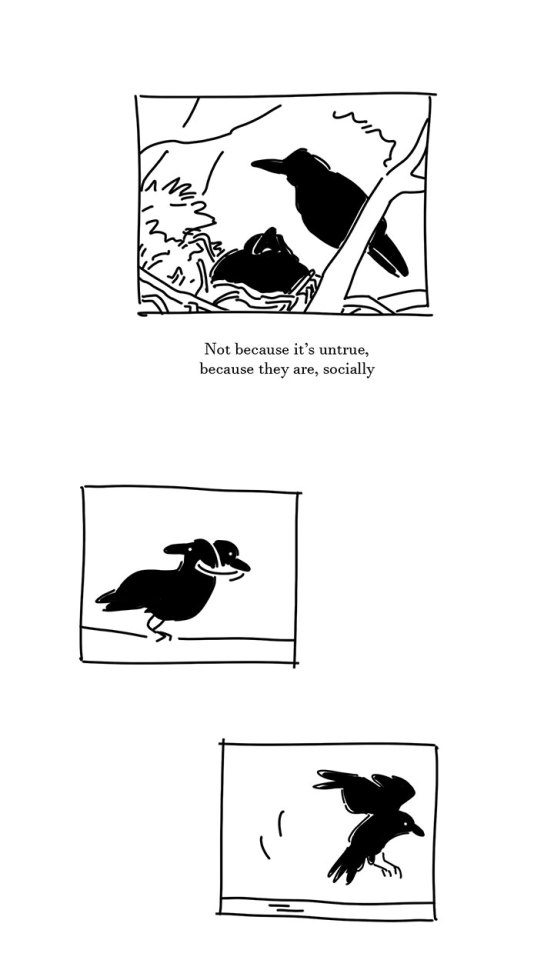

it IS just silly to compare human and animal behaviour like there's a moral lesson, but reading that crows are "socially monogamous but genetically promiscuous" has stuck with me lol
2K notes
·
View notes
Text
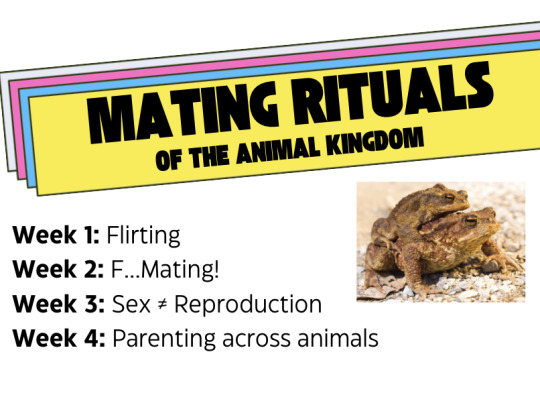
In my 4-week class, Mating Rituals of the Animal Kingdom, we'll cover things you never even THOUGHT to ask about animal mating.
INCLUDING:
-Spitballs, given as romantic gifts
-Spider Sex Percussionists™
-Bee perfumers
-Lemur Stink Fights
-Springtail females bench pressing males, who then Raccacoonie them to the pile of sperm the males prepared, so she then sits on it (God bless springtails)
-& MORE
Sign up here
I need 6 more people to sign up or Atlas Obscura won't run the course and this course is SO SILLY and SO FUN and you'll learn so much weird shit I can't even tell you. And JUST in time for VALENTINES day.
This class has no homework, and you can watch it live or later!
1K notes
·
View notes
Text
On this day of freedom, let's talk about how bald eagles are queer!

It starts with a female eagle named Hope and a male named Valor I. The two settled down to neat together, however Valor I wasn't a great dad. He did show up to incubate the eggs and basically never came around.
In comes another male, Valor II. He immediately did what a good eagle dad is supposed to, incubate, maintain the best, all that. This lead to him becoming Hope's new mate.
Here's where it gets interesting, Valor I didn't seem to mind and actually stuck around! Eventually Hope started mating with both of them, and Valor I even learned to be a good dad!

Unfortunately in 2017 Hope was killed by intruding eagles, but! The two male's actually stuck together and successfully raised their chicks!
Soon enough a new female named Starr came along and joined the two, and now she mates with both males every season!
This arrangement allows for the eagles to have a much more successful rate of raising chicks and fighting off other predators!
This particular story isn't the only one! Bald eagles have been seen in multiple arrangements including two females and one male!
#animals#nature#critters#wild life#wildlife#animal facts#facts#birds#bald eagle#pride#lgbt#lgbtq#queer#polyamory#america#fourth of july
4K notes
·
View notes
Text
Lobe finned versus ray finned fish

Short answer: ray finned fish evolved from from lobe finned fish
Long answer: Lobe finned fish were dominant for a long time in the waters before they climbed up onto land and evolved into you, dear reader. This occurred around 400 MYA (million years ago). Sometime before that, about 425 MYA, ray finned fishes had evolved, but remained relatively small. This was until the permian mass extinction (290-245 MYA), when many lobe finned fish died out, and ray finned fishes (teleosts) were left to flourish and evolve to fill the empty evolutionary niches. The only lobe finned fish left behind today are the elusive coelacanths and lungfish. ***AND*** as the awesome people in the notes would like me to add, all tetrapods (tetra meaning four, pod meaning foot) are phylogenetically lobe finned fishes as well. this means amphibians, reptiles, and mammals.
@marinebiologyshitposts @fuckyeahcoelacanths
#marine biology#lobe finned fish#ray finned fish#coelacanth#evolution#science#things ya should know#zoology#biology#ecology#animal facts#animals
1K notes
·
View notes
Text

2K notes
·
View notes
Text
squealing about this boop function. I literally made a sound akin to a squeaky toy. it brings me much joy. the cat paws. the animation. oh. oh. joy. i've never felt such joy in my life. in the same vein,
cat fun facts! (cat pics at the end)
Cat whiskers are immensely sensitive, about as sensitive as human fingertips! Cats use their whiskers to feel things around them and their face. Cats can actually get a type of information overload, called whisker fatigue, from their whiskers touching too many things/being touched too often, which is why it is recommended to use wide, flatter feeding + water dishes for your cats, and to avoid touching their whiskers unnecessarily.
Cat Paws have 3 types of Beans (paw pads)! Digital, Metacarpal and Carpal pads. The metacarpal pad is located in the center of the paw, the digital pads are located upon their main four toes, and the carpal pad is located on the staff of the cat's paws/legs (often referred to as their thumbs!) They also have what is called a "dew claw", located on the inner side of the front paws (which is more like a thumb if you ask me.) Cats also usually have 18 toes, but many cats have more than just 18. (usually when dew claws are present on the back paws)
Cat Paw Pads are also absorbent of shock and sound, and can feel texture, pressure and temperature! It's important to make sure your fluffy friend's paw pads aren't overgrown with fur, as this can affect their grip and effectiveness. (Most cats can do this themselves via grooming, but some cats can't!)
Cat's Ears have 36 muscles in the outer ear! (while we humans only have 6). They can rotate up to a full 180 degrees, helping cats pinpoint the location of sounds. Cats can amplify sound waves between 2,000 and 6,000 hertz, and can hear sounds up to 62 kHz, which is 1.6 octaves above humans, and 1 octave above that of a dog.
Cats are wonderful creatures! We're very lucky to have them as our companions. If you have a fluffy friend, give 'em a lil pat for me, for being such an amazing creature.
And, as a treat, here are some of my fluffy friends.
(1 and 2) The late Ms. Mojo Catface, (grey cat in 3,4,5,6) Mr. Spyro Needlepaw and (black cat in 3,5,7) Kitka Meowski, The Russian Queen of Day Drinking Vodka.







#boop o meter#boop#boop boop-a doop boop!#autism#autistic#autistic joy#cat#cats#cat facts#fun facts#animal facts#cat pictures#cat photos#cute cats#cat pics#catblr#kitty#april fool's day#april fools#easter monday
851 notes
·
View notes